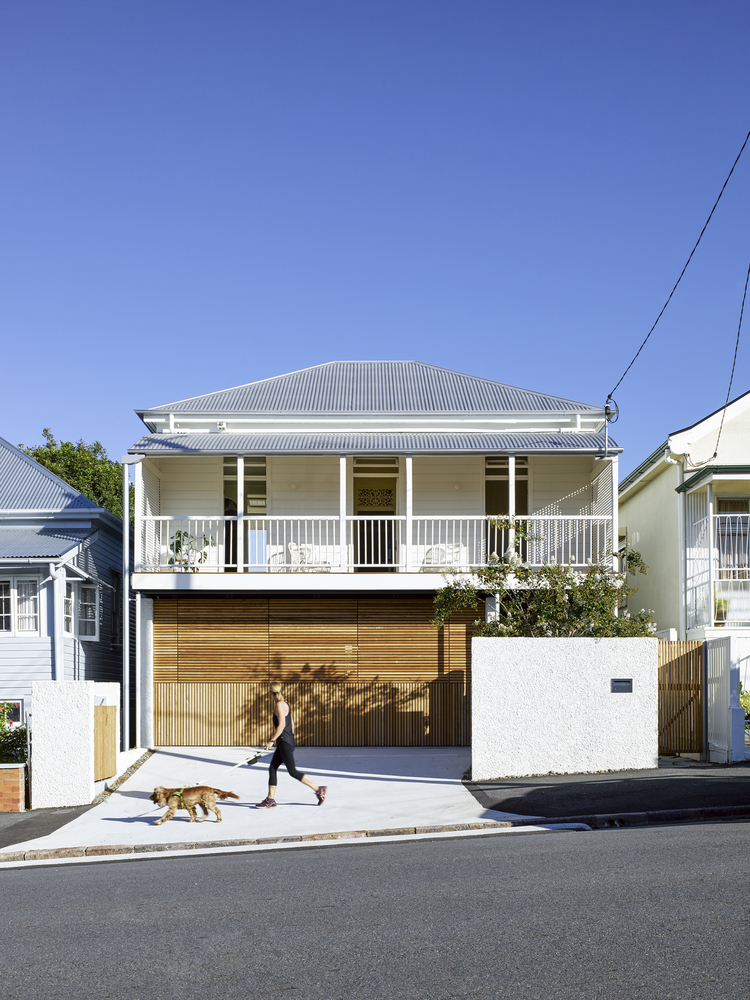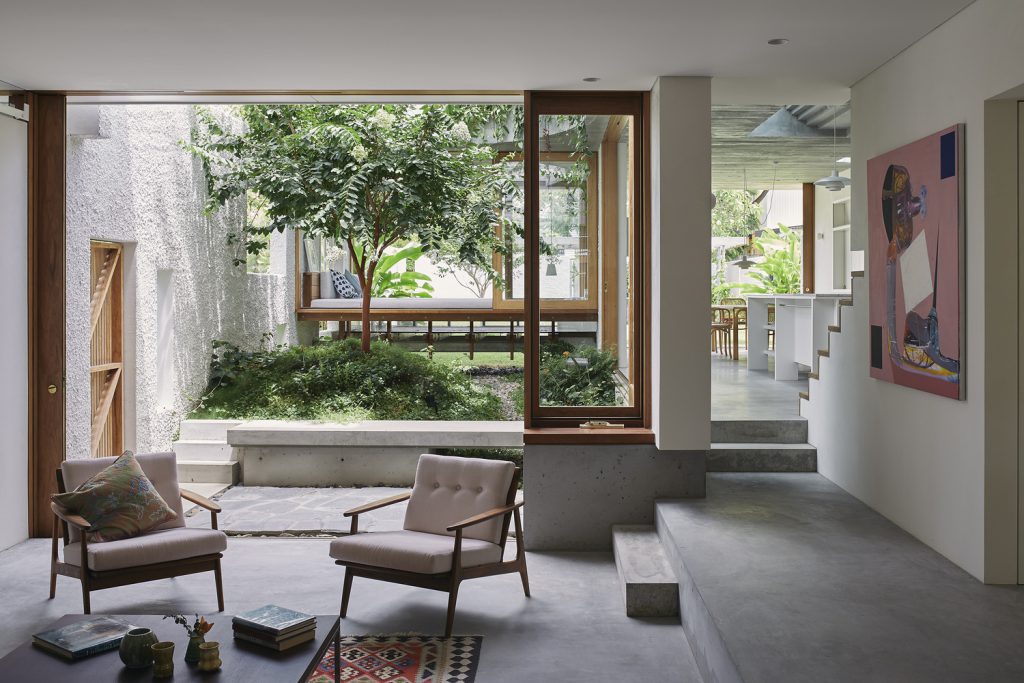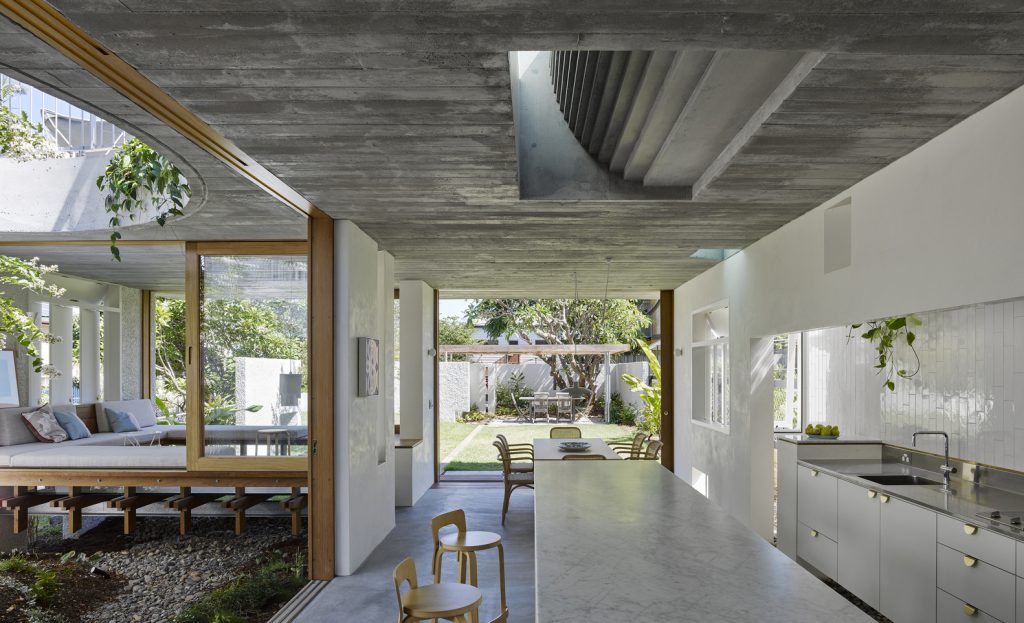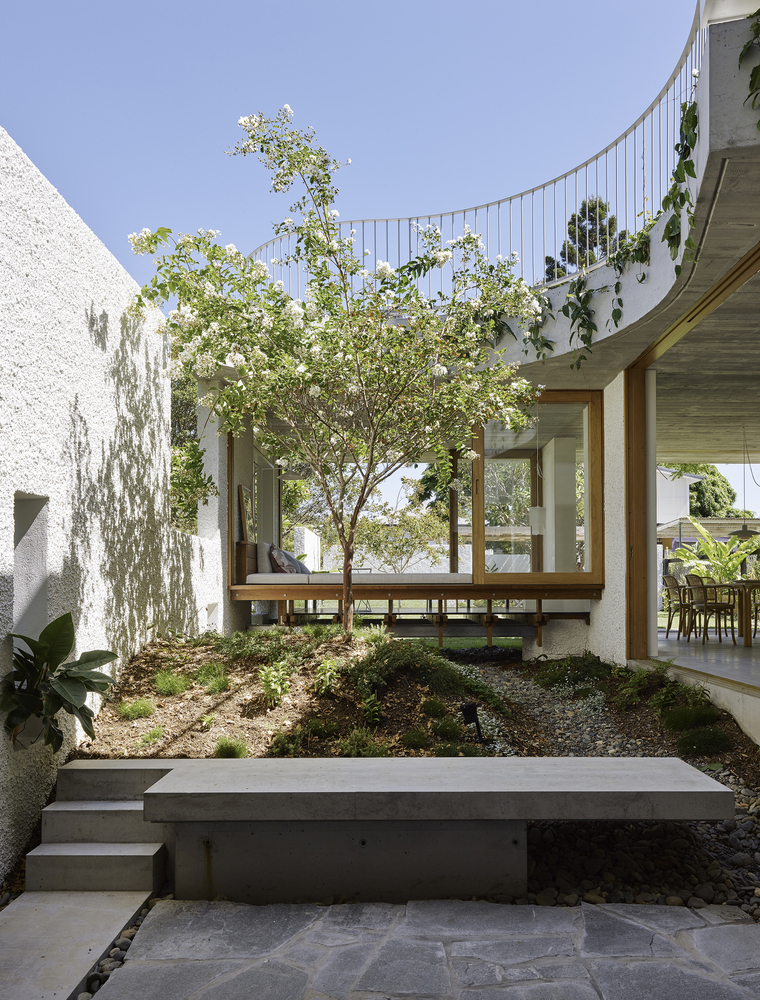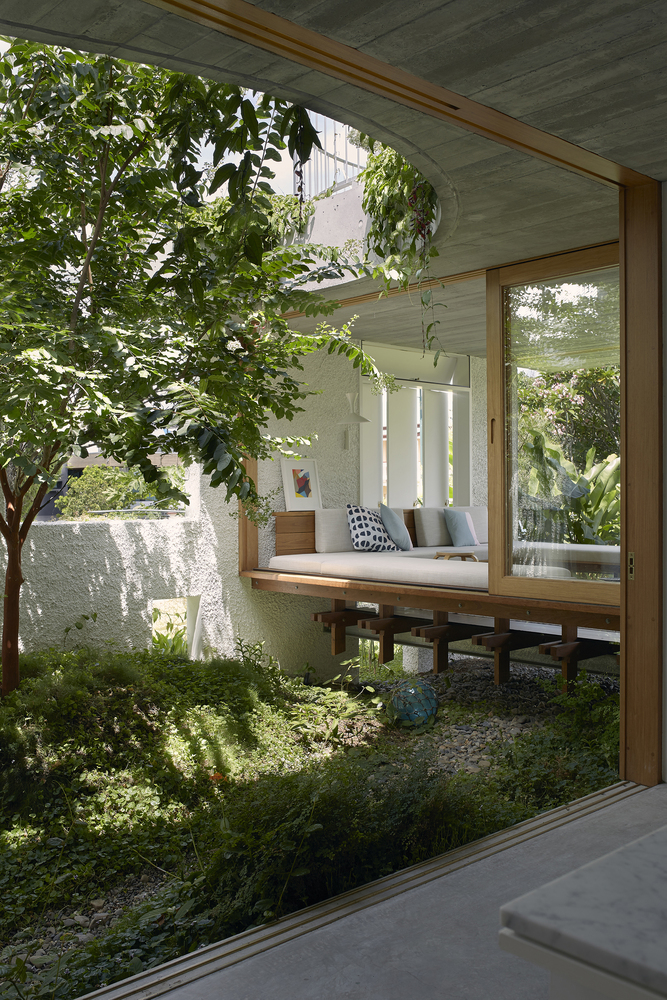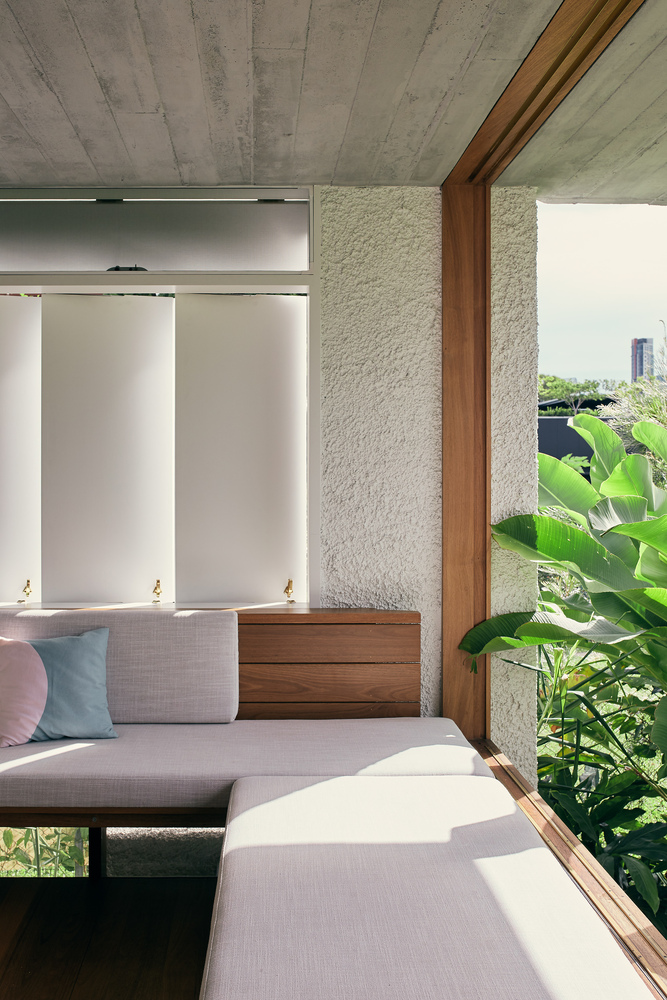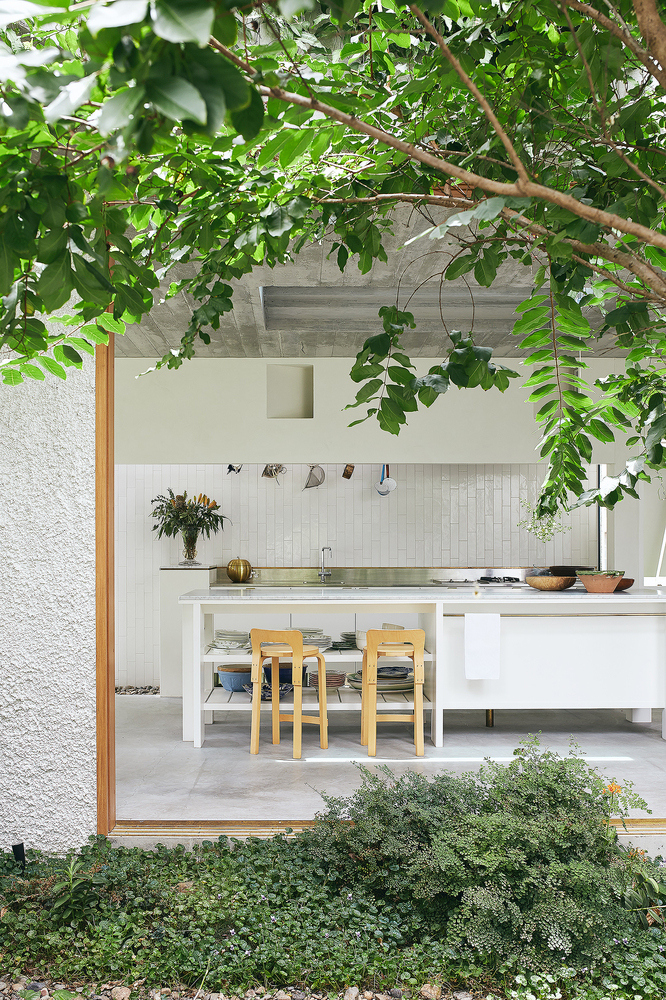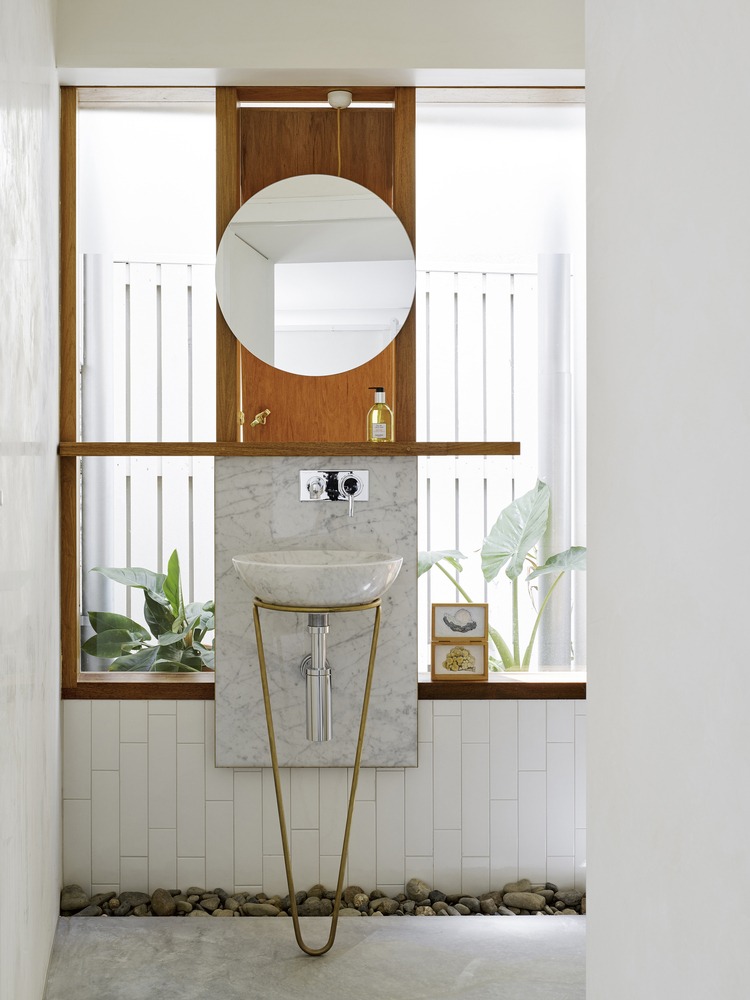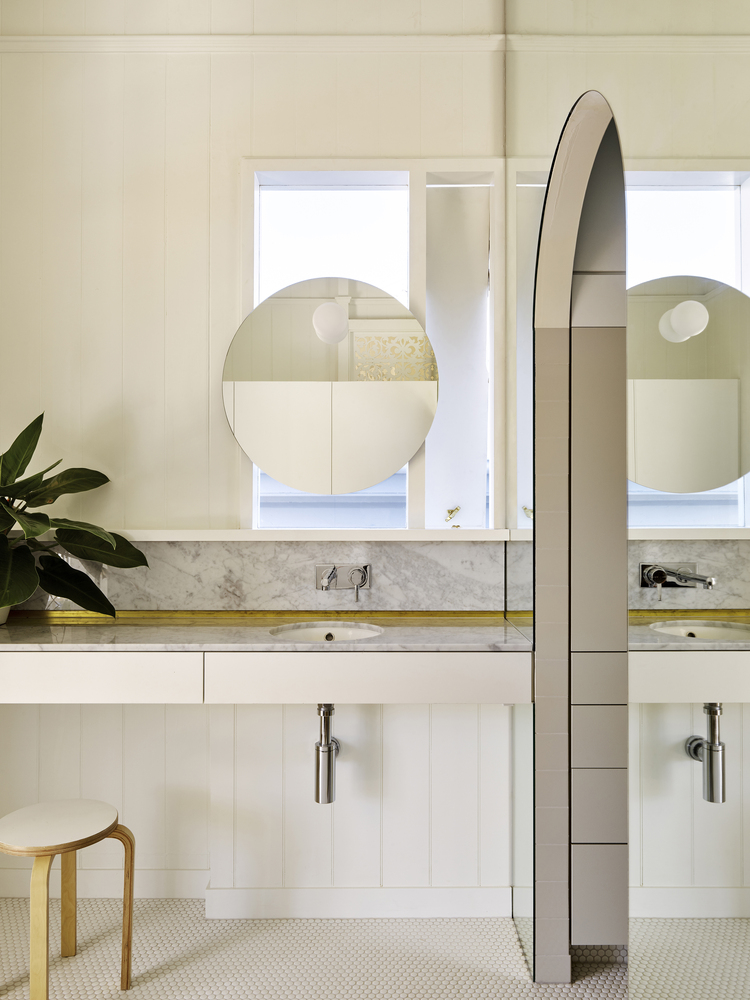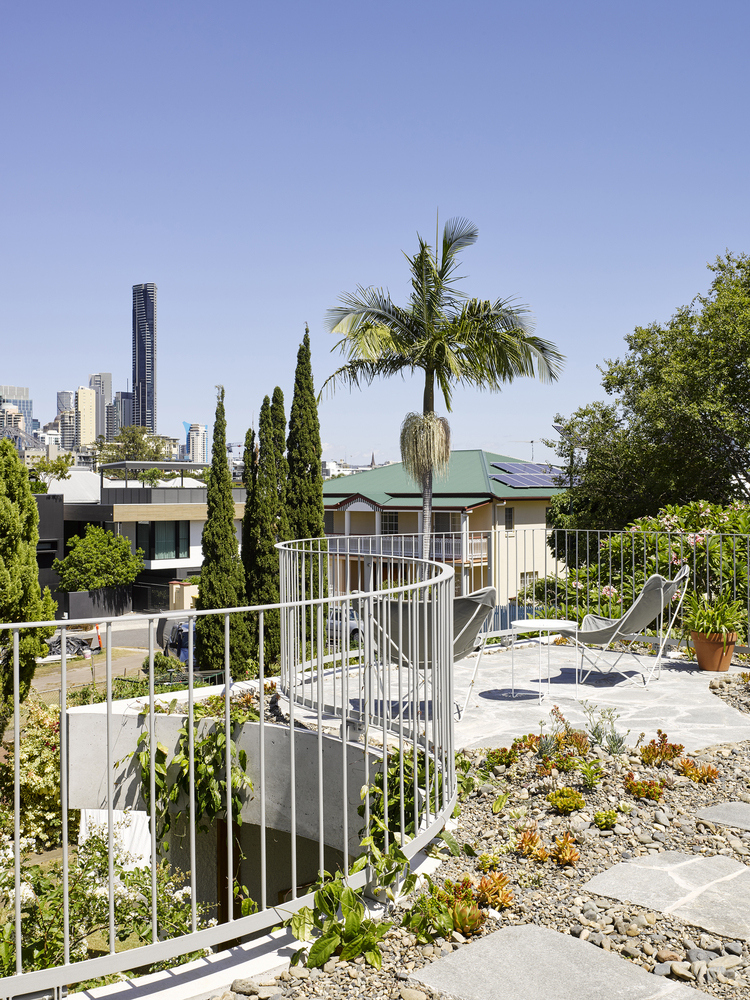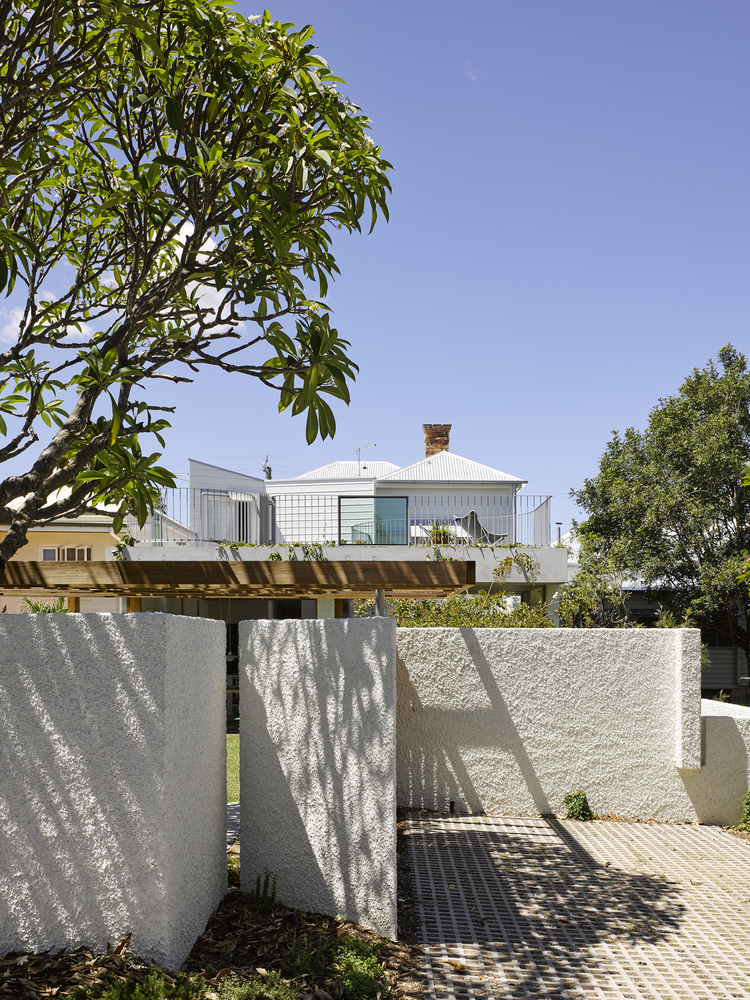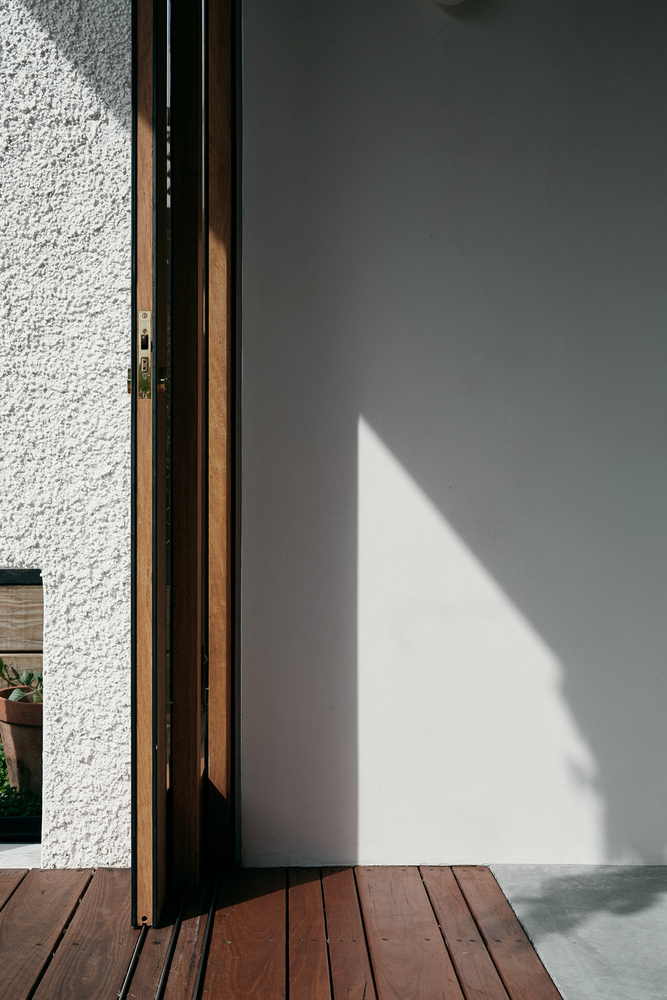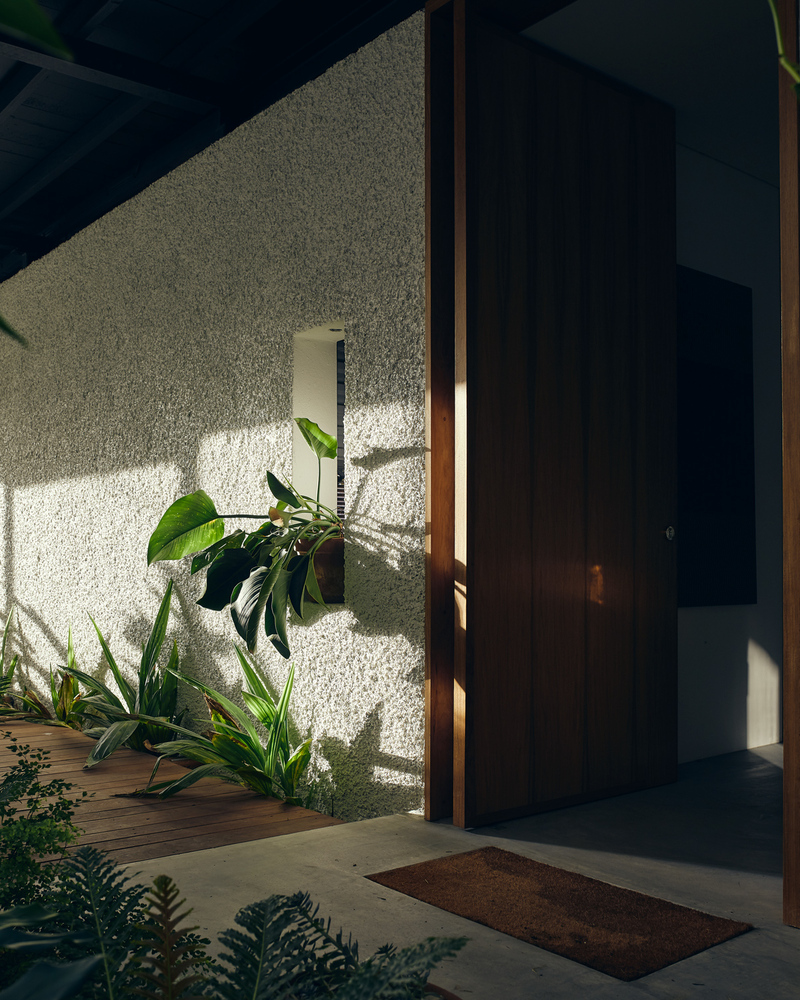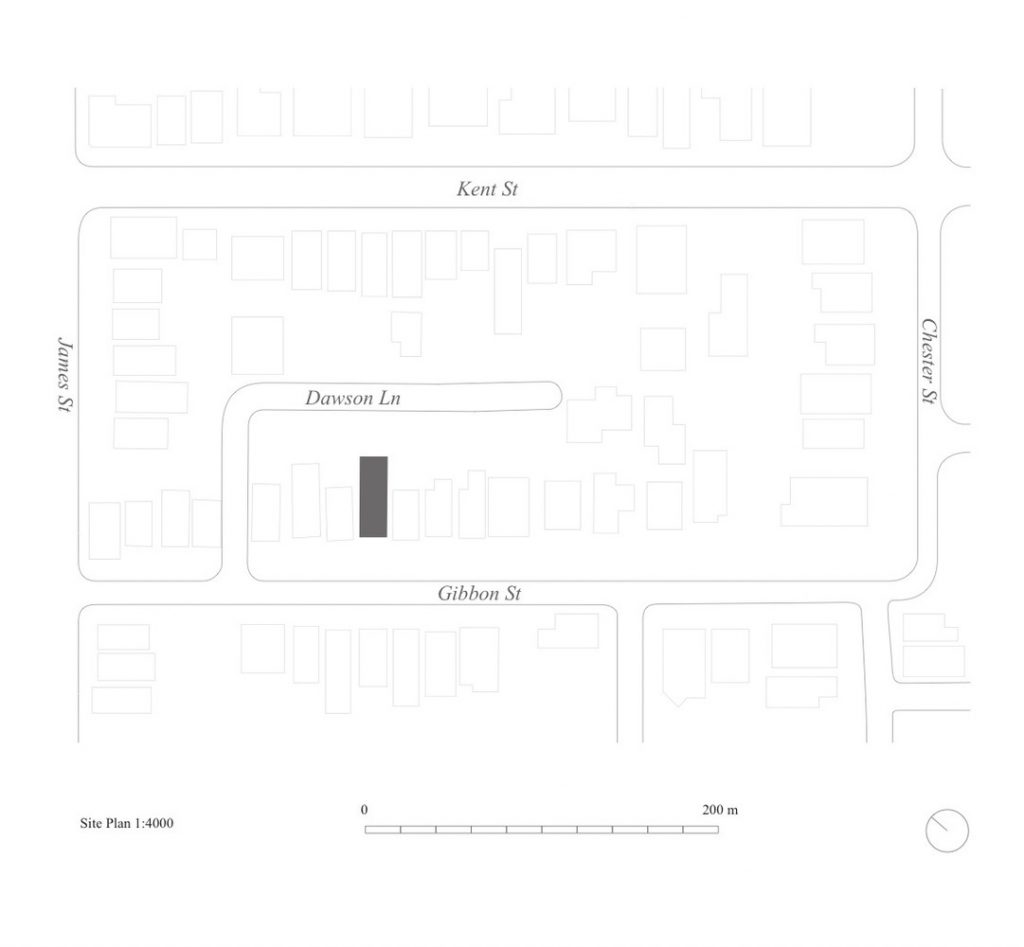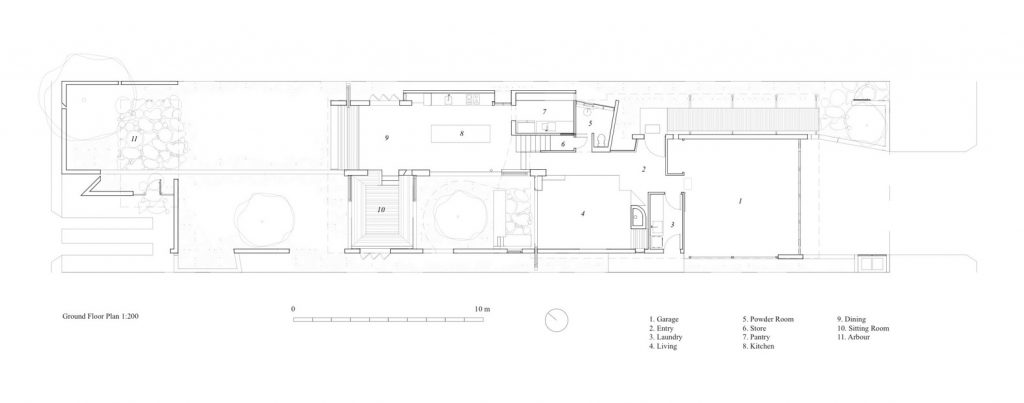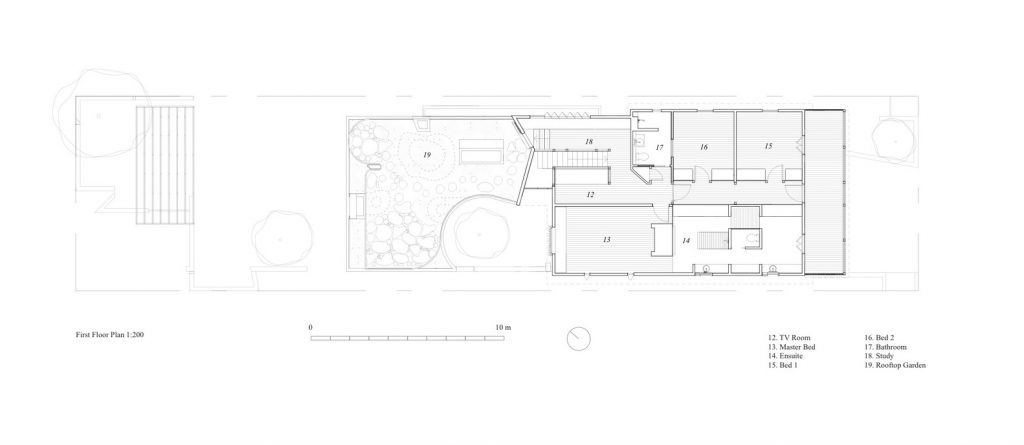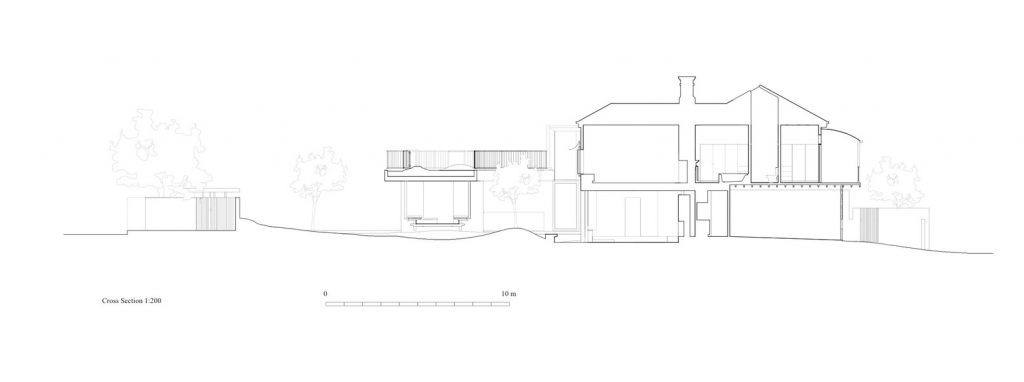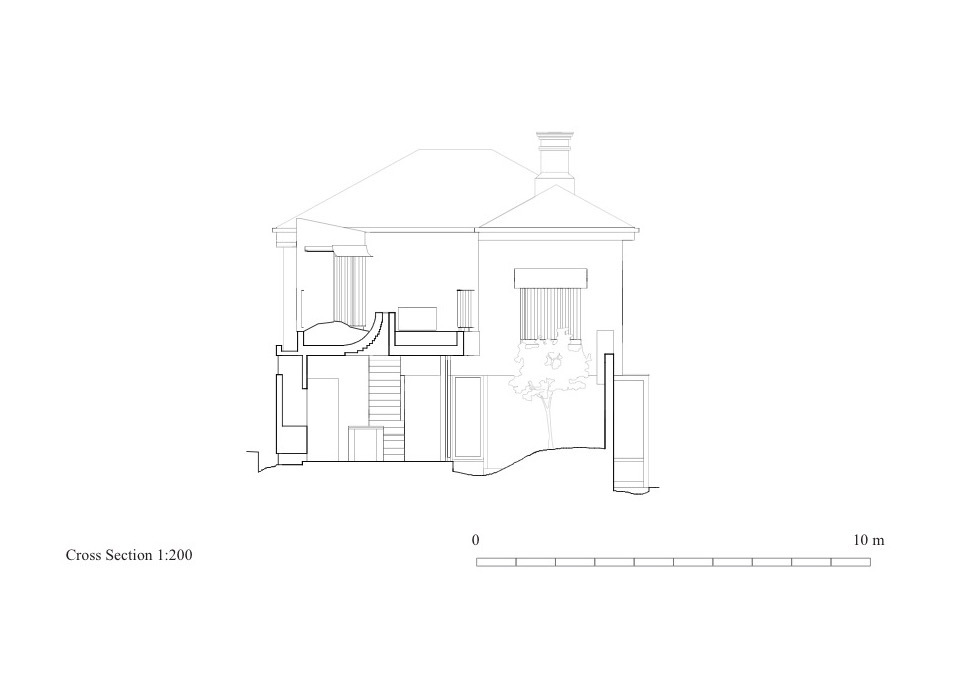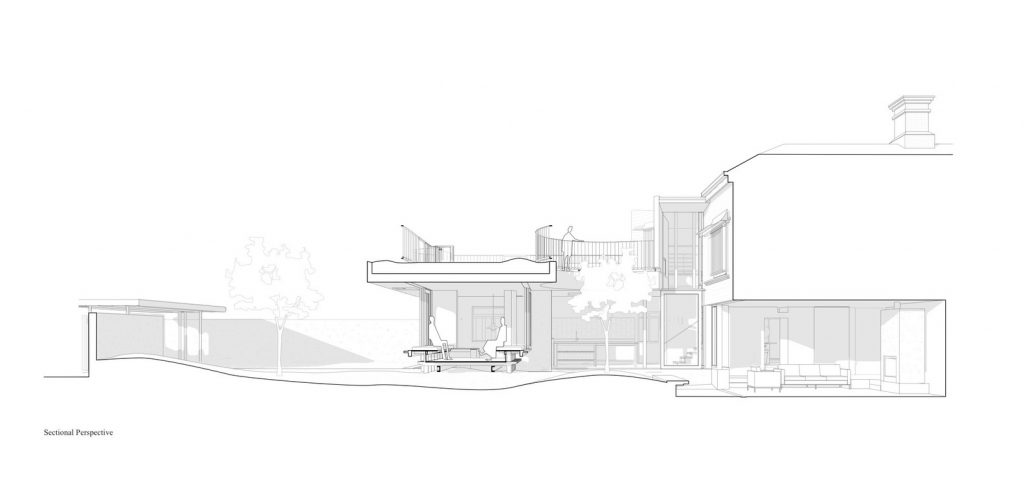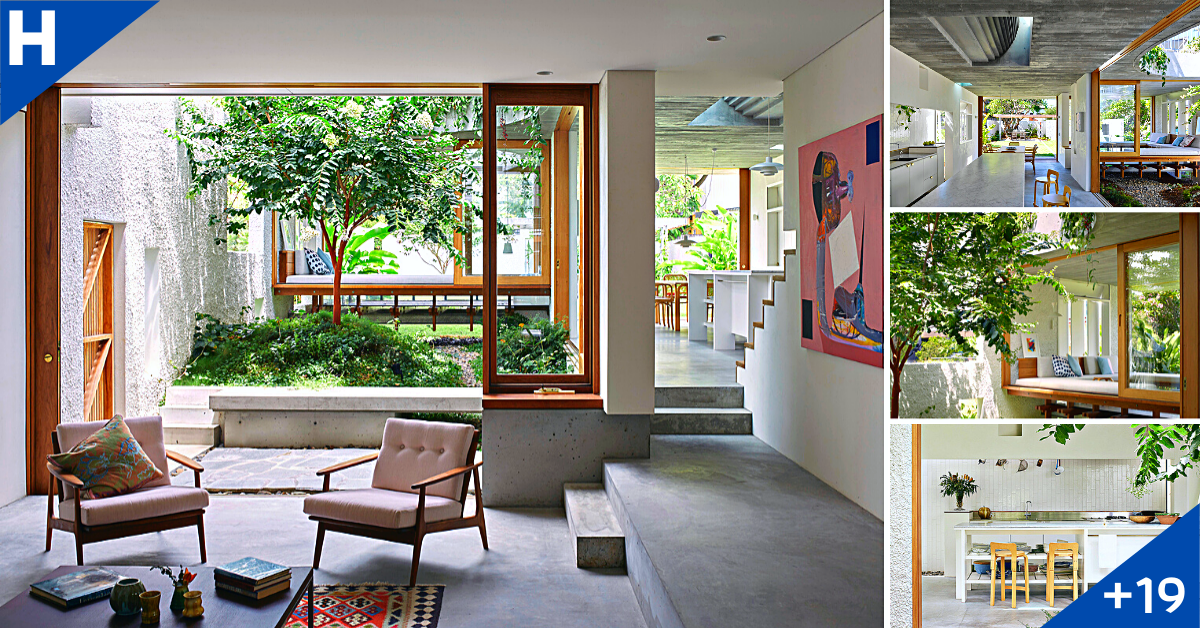
Architects : Cavill Architects
Area : 265 m²
Year : 2016
Photographs : David Chatfield, Christopher Frederick Jones
Inspired by architecture with veneration for the past, the added structures at Gibbon Street were imagined as a series of relic-like garden walls repurposed to accommodate a practical living environment. The philosophy implicit in this concept is the suspension of time, a wild experience, distinguished from the regularity of the modern built environment.
Beginning at the front, the garden walls meander under the existing cottage and finish at the rear of the site. Flanking internal and external areas, the walls dictate the experience of the observer – encouraging a slower pace, directing their focus to the landscape.
The added structures were conceived with a civic contribution in mind, particular attention was paid to the character of the streetscape and preservation of the landscape.
Rather than opt for the schematic, open-plan design of the contemporary renovated Queensland workers cottage – with its ambiguous arrangement of living spaces – the formalized living, sitting and dining areas are compartmentalized, each room dedicated to their function.
The notion of a genuinely external experience runs counter to the traditional plan of a Queensland worker cottage, where the living areas often sit alongside an external deck, causing an unnecessary friction: the two spaces create a singular experience.
The plan here was to subvert that contradiction and design rooms with specific and distinctive experiences. The same concept applies to the external areas and landscape, although enjoyed less frequently, they provide a genuinely external living experience.
Brisbane is increasingly impacted by major weather events and flooding is amplified by the use of hard, impervious surfaces and building materials. This is evident on adjoining lots at Gibbon St where entire landscapes have been lost to impermeable surfaces.
The house actively prioritizes permeability and the catchment of rainwater. Mindful of its impact on the character of the street, the renovation preserves features typical to the pre-war workers’ cottage.
Particular care was taken in the way the garage door was integrated so as to not overburden the streetscape; a timber screen provides visual relief, friendlier than the opaque garage door of modern renovations, it mediates more delicately between public and private space.
Gibbon St. is located in New Farm, Brisbane’s “little Italy” – the rendered concrete structure is a nod to the building precedents set by Italian migrant settlers. It is an attempt to legitimize the conflict between the timber and tin workers cottage and the ‘Mediterranianised’ migrant housing that was a crucial part of the post-war settlement.
.
.
.
.
.
.
.
.
.
Cr. Archdaily

